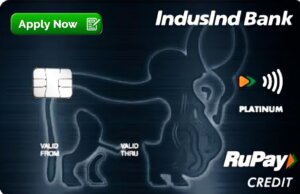
Overview
Open Banking is a system that allows consumers and businesses to securely share their financial data with third-party providers (TPPs), such as fintech apps or other banks, through standardized APIs (Application Programming Interfaces). It promotes innovation, improves financial transparency, and gives customers more control over their financial lives.
How Open Banking Works
At the heart of Open Banking are APIs that allow for secure data exchange between banks and authorized third-party providers — with the user’s explicit consent.
Example:
You use a budgeting app. Instead of entering your spending manually, the app connects securely to your bank account (via Open Banking) and tracks your transactions in real time.
Key Players:
-
Account Information Service Providers (AISPs): Access account data (e.g., Mint, YNAB)
-
Payment Initiation Service Providers (PISPs): Initiate payments on your behalf (e.g., Stripe, TrueLayer)
-
Banks / Financial Institutions: Must open their APIs to licensed third parties
-
Consumers / Businesses: Decide who gets access to their data

Benefits of Open Banking
✅ For Consumers:
-
Better Financial Insights: See all accounts in one place
-
Personalized Products: Better loan or savings offers based on real behavior
-
Faster Payments: Seamless in-app payments, no need for card info
-
Increased Control: You decide what data to share and for how long
✅ For Businesses:
-
Improved Customer Experience: Real-time data access enables tailored services
-
Reduced Fraud: Strong authentication and direct bank connections
-
Streamlined Operations: Faster onboarding and KYC via financial data access

Risks & Challenges
-
Data Privacy & Security: Risk of misuse if access is granted to shady providers
-
Regulatory Complexity: Different rules across regions (e.g., EU’s PSD2 vs. U.S. regulations)
-
Consumer Awareness: Many still don’t know what Open Banking is or how to use it safely
Global State of Open Banking in 2025
Europe
-
Fully regulated under PSD2 and moving toward Open Finance
-
Broad adoption across banking and fintech sectors
United Kingdom
-
One of the leaders with the UK Open Banking Implementation Entity (OBIE)
-
Over 7 million users actively using Open Banking services
United States
-
No federal mandate, but CFPB (Consumer Financial Protection Bureau) is pushing for standardized open banking rules
-
Market-driven growth, led by Plaid, MX, and others
Asia-Pacific
-
Australia: Strong Open Banking under the Consumer Data Right (CDR)
-
India: Moving quickly with the Account Aggregator system and UPI integration

Trends to Watch in 2025
-
🔄 Open Finance Expansion: Moving beyond banking to insurance, pensions, and investments
-
🧠 AI + Open Banking: More intelligent financial advisors powered by real-time data
-
🌍 Cross-Border Standards: Growing push for global interoperability
-
🛡️ Stronger Consumer Protections: Enhanced rights and security protocols
-
🧩 Embedded Finance: Open Banking powering financial tools within non-financial apps (e.g., Uber offering loans to drivers)
How to Get Started with Open Banking
-
Choose a trusted app or provider (check if they’re regulated/licensed)
-
Grant explicit permission — only for the data needed
-
Monitor access and revoke anytime
-
Use strong authentication methods (like biometrics or MFA)
Final Thoughts
Open Banking in 2025 isn’t just about tech — it’s about empowering users with their own data, reshaping how we interact with money, and building a more open, competitive financial ecosystem. As adoption grows, expect even more innovation — and more responsibility — for both providers and consumers.